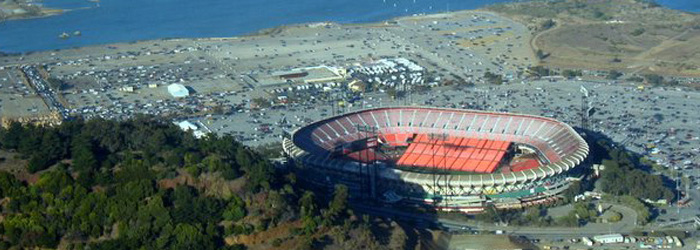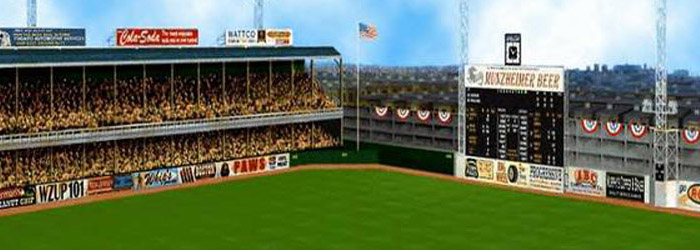









Described below are the primary statistical tools used to evaluate players and teams on this site. Further information on statistical terms is available in the glossary. For more information, see the referenced articles from Total Baseball. To submit questions, comments, suggestions, or corrections please visit the contact page or .
Park factor is an estimate of a ballpark’s effects on batting and pitching and is expressed as either a decimal or a whole number. A neutral ballpark has a park factor of 1.00 or 100. Park factors are those used in Total Baseball, and include three-year averages unless a ballpark was in use for fewer than three seasons. Park factors are also adjusted to reflect the fact that a batter or pitcher does not face his own team. Thus, different park factors are provided for a team’s batters and pitchers.
For more information, see Total Baseball’s essay on park factors. The method for figuring park factors is available in the Total Baseball glossary. A table of batters’ park factors (BPF) and pitchers’ park factors (PPF) for every team since 1876 is available on the Park Factors page.
Adjusted ERA (AERA) is earned-run average adjusted for league ERA and pitchers’ park factor. The formula is as follows:
LgERA/ERA*PPF
As an example, here is the calculation of Pedro Martinez’s 1999 season. Martinez had a 2.07 ERA, while the American League ERA was 4.86. The Red Sox’s pitchers’ park factor was 1.02:
4.86/2.07*1.02=2.40
The decimal is dropped so that 2.40 becomes 240. A league-average performance is 100.
Pitching runs (PR), developed by Total Baseball’s Pete Palmer, is an estimate of the number of earned runs prevented beyond the league average adjusted for pitchers’ park factor. The formula is as follows:
[(LgERA*PPF)-ERA]*IP/9
Here is the calculation for Pedro Martinez’s 1999 season. Martinez pitched 213.3 innings and had a 2.07 ERA, while the American League ERA was 4.86. The Red Sox’s pitchers’ park factor was 1.02:
[(4.86*1.02)-2.07]*213.3/9=68
Thus, Martinez prevented an estimated 68 runs beyond the league average. A league-average performance is zero. For more information, see Total Baseball’s essay on pitching runs.
Adjusted OPS (AOPS), called adjusted production in Total Baseball, is on-base percentage plus slugging average adjusted for league OBP and slugging average and batters’ park factor. The formula is as follows:
[(OBP/LgOBP)+(Slg/LgSlg)-1]/BPF
Only non-pitchers’ OBP and slugging average are used to calculate adjusted OPS. This eliminates the comparative advantage National-Leaguers would have over American-Leaguers since pitchers do not bat in the American League. A table of non-pitchers’ OBPs and slugging averages for every season since 1876 is available on the stats pages.
Here is the calculation of Mark McGwire’s 1998 season. McGwire had a .470 OBP and .752 slugging average, while non-pitchers had a .339 OBP and .358 slugging average. The Cardinals’ batters’ park factor was .99:
[(.470/.339)+(.752/.358)-1)]/.99=2.51
The decimal is dropped so that 2.51 becomes 251. A league-average performance is 100.
Batting runs (BR), developed by Total Baseball’s Pete Palmer, is an estimate of the number of runs contributed beyond the league average adjusted for batters’ park factor. The formula is as follows:
(.16*H)+(.31*(TB+BB+HBP))+(.3*SB)-(.6*CS)-(BPF*LOV*(AB-H))
The values are the result of Palmer’s 1978 computer simulation of every major-league game since 1901. The league out value (LOV) fluctuates with league offensive levels. An out is costlier in high-scoring seasons than in low-scoring seasons. Only non-pitchers’ statistics are used to calculate league out value. This eliminates the comparative advantage National-Leaguers would have over American-Leaguers since pitchers do not bat in the American League. The league out value is calculated using this equation:
[(.16*H)+(.31*(TB+BB+HBP))]/(AB-H)
Although a more precise number may be used, a league out value of .3 works well for most recent seasons. A table of league out values and non-pitchers’ statistics for every season since 1876 is available here.
Here is the calculation of Mark McGwire’s 1998 season. McGwire had 152 hits, 383 total bases, 162 walks, six hit by pitch, one stolen base, and zero caught stealing in 509 at-bats. The Cardinals’ batters’ park factor was .99. The league out value was .286:
(.16*152)+(.31*(383+162+6))+(.3*1)-(.6*0)-(.99*.286*(509-152))=94
Thus, McGwire contributed an estimated 94 runs beyond the league average. A league-average performance is zero. For more information, see Total Baseball’s essays on linear weights, batting runs and stolen-base runs.
Award share (AS), developed by Bill James, is the percentage of maximum votes received in award voting. Take, for example, Pedro Martinez’s performance in Cy Young voting. In 1997, Martinez received 134 of a maximum 140 votes, for a .96 award share. In 1998 Martinez received 65 of a maximum 140 votes, for a .46 award share. In 1999, Martinez received 140 of a maximum 140 votes for a 1.00 award share. Martinez’s career award share is calculated as follows:
.96+.46+1.00=2.42
Thus, Martinez has a career 2.42 award share in Cy Young voting.
Pythagorean winning percentage (PPct), developed by Bill James, is the predicted winning percentage based on runs and runs allowed. The formula is as follows:
Runs^2/(Runs^2+Runs Allowed^2)
Here is the calculation for the 1999 Yankees. The Yankees scored 900 runs and allowed 731 runs:
900^2/(900^2+731^2)=.603
Thus, the Yankees would be predicted to have a .603 winning percentage. In actuality, the Yankees had a .605 winning percentage. A more precise calculation uses a factor of 1.83, but a factor of two works almost as well. From Pythagorean winning percentage it is possible to figure Pythagorean wins (PW) and Pythagorean losses (PL).